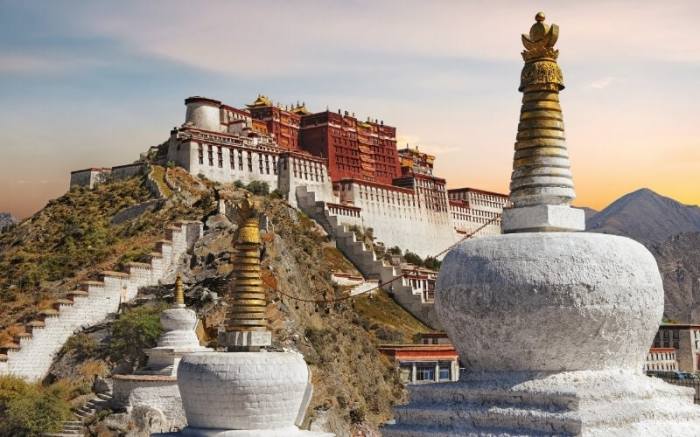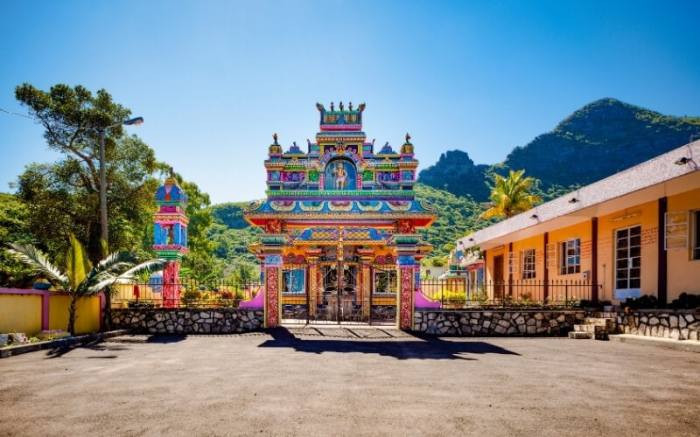
Cultural travel destinations offer an enriching escape, transcending typical tourism to immerse travelers in the heart of diverse societies. This exploration delves into the nuances of planning such journeys, from understanding the defining characteristics of a culturally rich experience to navigating sustainable practices and exploring diverse travel styles. We’ll uncover hidden gems, discuss practical logistics, and ultimately, inspire you to embark on a transformative cultural adventure.
This guide provides a comprehensive overview of planning and experiencing culturally immersive trips, covering everything from choosing the right destination and transportation to finding suitable accommodations and respecting local customs. We aim to empower you with the knowledge and resources necessary to craft a truly memorable and impactful cultural travel experience.
Defining Cultural Travel Destinations

Cultural travel destinations offer experiences that immerse travelers in the local culture, history, and traditions of a place. Unlike other forms of travel, which may prioritize relaxation, adventure, or specific activities, cultural travel focuses on understanding and engaging with the unique aspects of a destination’s human element. This goes beyond simply visiting famous landmarks; it’s about connecting with the people, their way of life, and the stories they tell.Cultural travel destinations are characterized by a rich tapestry of elements that contribute to a deeply enriching experience.
These elements include historical sites, traditional art forms, local cuisine, unique customs and celebrations, and the opportunity to interact with local communities. The emphasis is on authentic experiences, providing insights into the destination’s soul and fostering a deeper understanding of different cultures.
Types of Cultural Experiences Travelers Seek
Travelers seek diverse cultural experiences, driven by individual interests and preferences. Some may prioritize historical exploration, visiting ancient ruins or museums to learn about a civilization’s past. Others may focus on artistic immersion, attending performances, visiting art galleries, or participating in traditional craft workshops. Foodies may seek out culinary tours, experiencing local markets and traditional cooking classes. Many travelers also seek opportunities for genuine human interaction, participating in community events or engaging in conversations with locals to gain a personal perspective.
The desire to understand a different worldview and broaden one’s horizons is a common driving force.
Examples of Cultural Travel Destinations
The following table provides examples of various cultural travel destinations, highlighting their unique characteristics and suggesting appropriate trip durations.
| Destination Type | Cultural Highlights | Typical Activities | Recommended Duration |
|---|---|---|---|
| Ancient City (e.g., Rome, Italy) | Ancient ruins, historical architecture, classical art, remnants of the Roman Empire | Visiting the Colosseum, Roman Forum, Pantheon; exploring museums; enjoying traditional Roman cuisine; attending an opera | 7-10 days |
| Artistic Hub (e.g., Florence, Italy) | Renaissance art and architecture, world-class museums, artisan workshops, vibrant artistic community | Visiting the Uffizi Gallery and Accademia Gallery; exploring the Ponte Vecchio; attending a cooking class; taking a leather-making workshop | 5-7 days |
| Ethnically Diverse City (e.g., New York City, USA) | Diverse neighborhoods reflecting various cultures and ethnicities, diverse cuisine, vibrant street art, museums showcasing different cultures | Exploring different neighborhoods like Chinatown, Little Italy, Greenwich Village; visiting museums like the Metropolitan Museum of Art; enjoying diverse culinary experiences | 5-7 days (can be extended based on interests) |
| Traditional Village (e.g., A rural village in Japan) | Traditional architecture, local crafts, farming practices, unique customs and festivals, serene natural beauty | Visiting local temples and shrines; participating in tea ceremonies; attending a traditional festival; staying in a traditional Ryokan (Japanese inn) | 3-5 days |
Popular Cultural Travel Destinations Around the World

Exploring the world’s rich tapestry of cultures is a rewarding experience, offering a glimpse into diverse traditions, histories, and ways of life. Cultural tourism provides a unique opportunity to connect with different societies, learn from their unique perspectives, and broaden one’s understanding of the human experience. This section highlights some of the world’s most popular cultural destinations, showcasing their distinct cultural offerings.
The following selection represents a small fraction of the countless fascinating cultural destinations available globally. The choices reflect a balance between accessibility, cultural significance, and the diversity of global experiences. Each destination offers a unique blend of historical sites, artistic expressions, and local traditions.
Cultural Destinations in Asia
Asia, a continent brimming with ancient civilizations and vibrant modern cultures, offers a wealth of options for the culturally curious traveler. From the bustling streets of Tokyo to the serene temples of Kyoto, Asia’s diversity is unparalleled.
- Kyoto, Japan: Known for its meticulously preserved traditional wooden architecture, serene gardens, and geisha district, Kyoto offers a captivating journey into Japan’s rich history and artistic heritage. Must-see attractions include Kinkaku-ji (Golden Pavilion), Fushimi Inari Shrine, and the Gion district. Experiences include a traditional tea ceremony and a visit to a geisha district.
- Beijing, China: A city steeped in history and imperial grandeur, Beijing boasts iconic landmarks like the Forbidden City, the Temple of Heaven, and the Great Wall. Visitors can explore ancient palaces, bustling markets, and experience the vibrant contemporary culture of this modern metropolis. Must-see attractions include the Forbidden City, the Summer Palace, and Tiananmen Square. Experiences include a Peking duck dinner and a visit to a traditional hutong (alleyway).
- Agra, India: Home to the Taj Mahal, one of the world’s most iconic monuments, Agra showcases the pinnacle of Mughal architecture and artistry. Beyond the Taj Mahal, the city also offers a glimpse into India’s rich history and diverse cultural heritage. Must-see attractions include the Taj Mahal, Agra Fort, and Fatehpur Sikri. Experiences include a rickshaw ride through the city and a visit to a local spice market.
Cultural Destinations in Europe, Cultural travel destinations
Europe, the cradle of Western civilization, boasts a rich history and diverse cultural landscape. From ancient ruins to medieval castles, Europe offers a captivating journey through time and across various cultural traditions.
- Rome, Italy: The eternal city, Rome, is a treasure trove of ancient Roman history and Renaissance art. The Colosseum, the Roman Forum, and the Vatican City are just a few of the many historical and cultural landmarks that make Rome a must-see destination. Must-see attractions include the Colosseum, the Roman Forum, the Vatican City (including St. Peter’s Basilica and the Vatican Museums), and the Pantheon.
Experiences include a pasta-making class and a visit to a traditional trattoria.
- Paris, France: The city of lights, Paris, is renowned for its iconic landmarks, world-class museums, and romantic atmosphere. The Eiffel Tower, the Louvre Museum, and the charming streets of Montmartre are just a few of the many attractions that make Paris a captivating destination. Must-see attractions include the Eiffel Tower, the Louvre Museum, the Arc de Triomphe, and the Notre Dame Cathedral.
Experiences include a Seine River cruise and a visit to a Parisian café.
- Athens, Greece: The birthplace of democracy and Western civilization, Athens is home to ancient ruins, museums, and a vibrant modern city. The Acropolis, the Parthenon, and the ancient Agora are just a few of the many historical and cultural landmarks that make Athens a must-see destination. Must-see attractions include the Acropolis, the Parthenon, the Acropolis Museum, and the Ancient Agora.
Experiences include a guided tour of the Acropolis and a visit to a traditional taverna.
Cultural Destinations in South America
South America offers a unique blend of indigenous cultures and European influences, creating a rich and diverse cultural landscape. From the vibrant streets of Rio de Janeiro to the ancient ruins of Machu Picchu, South America offers a truly unforgettable travel experience.
- Machu Picchu, Peru: The lost city of the Incas, Machu Picchu, is a breathtaking example of Inca architecture and engineering. Nestled high in the Andes Mountains, Machu Picchu offers a unique opportunity to explore the remains of this ancient civilization. Must-see attractions include Machu Picchu itself, Huayna Picchu (optional hike), and the surrounding Inca Trail (for trekkers). Experiences include hiking the Inca Trail (requires permits and planning well in advance) and exploring the ruins with a guide.
- Rio de Janeiro, Brazil: Known for its stunning beaches, vibrant nightlife, and iconic Christ the Redeemer statue, Rio de Janeiro offers a captivating blend of natural beauty and cultural richness. Visitors can explore the city’s beaches, samba schools, and historical landmarks. Must-see attractions include Christ the Redeemer, Sugarloaf Mountain, Copacabana Beach, and Ipanema Beach. Experiences include attending a samba show and taking a cable car ride up Sugarloaf Mountain.
Planning a Cultural Immersion Trip
Embarking on a culturally immersive trip requires meticulous planning to ensure a rewarding and respectful experience. Careful preparation minimizes unexpected challenges and maximizes opportunities for authentic engagement with the local culture. This guide provides a step-by-step approach to planning your journey.
Understanding the Importance of Pre-Trip Research
Thorough research of local customs and traditions is paramount for a successful cultural immersion. Understanding local etiquette, such as appropriate greetings, dining practices, and dress codes, demonstrates respect and fosters positive interactions with locals. For example, in some cultures, direct eye contact may be considered disrespectful, while in others, it’s a sign of honesty and engagement. Researching local laws and social norms also helps avoid unintentional offenses and ensures a safe and enjoyable trip.
Websites like the local tourism board’s official site, reputable travel blogs, and cultural guides can offer invaluable insights.
Securing Necessary Visas and Travel Documents
Obtaining the correct visas and travel documents is a critical step. Visa requirements vary significantly depending on your nationality and destination. Begin this process well in advance of your trip, as visa applications can take considerable time to process. Check the specific visa requirements for your destination on the website of the relevant embassy or consulate. Beyond visas, ensure your passport is valid for at least six months beyond your planned return date.
Make copies of all important documents, including your passport, visa, travel insurance policy, and flight/hotel confirmations, and store them separately from the originals. Consider storing digital copies in a cloud service for easy access in case of loss or theft.
Creating a Packing Checklist for Cultural Immersion
Packing appropriately is essential for a comfortable and respectful cultural immersion. Your packing list should reflect the climate and cultural norms of your destination. Consider including versatile clothing items that are both comfortable and appropriate for various situations. For example, lightweight, breathable clothing is ideal for warm climates, while layers are essential for cooler destinations. Remember to pack appropriate footwear for walking and exploring.
Beyond clothing, include essential toiletries, medications (with prescriptions if necessary), and any necessary adapters or converters for electronics. A phrasebook or translation app can prove invaluable for communication. Finally, a small, lightweight backpack is useful for day trips and carrying essentials.
Ultimately, the journey of cultural travel is a personal one, shaped by individual preferences and priorities. Whether you prefer luxurious comfort or adventurous exploration, sustainable practices or budget-conscious choices, this guide has provided a framework to navigate your own unique path. Remember that the most rewarding cultural experiences often arise from embracing the unexpected and engaging with local communities authentically.
So, pack your bags, open your mind, and prepare for an unforgettable adventure.
Quick FAQs
What is the best time of year to visit cultural destinations?
The ideal time depends on the specific destination’s climate and potential peak seasons. Researching the weather patterns and local events of your chosen destination is crucial for optimal travel.
How can I learn more about local customs before my trip?
Utilize online resources, guidebooks, and cultural blogs to research local customs and etiquette. Engaging with local communities online or through travel forums can also provide valuable insights.
What are some ways to support local economies during my cultural trip?
Support local businesses by eating at locally-owned restaurants, purchasing souvenirs from artisans, and participating in tours guided by local experts. Avoid large, international chains whenever possible.
How do I handle unexpected situations or emergencies while traveling abroad?
Register your trip with your embassy or consulate. Carry emergency contact information and travel insurance details. Familiarize yourself with local emergency services numbers and protocols.






